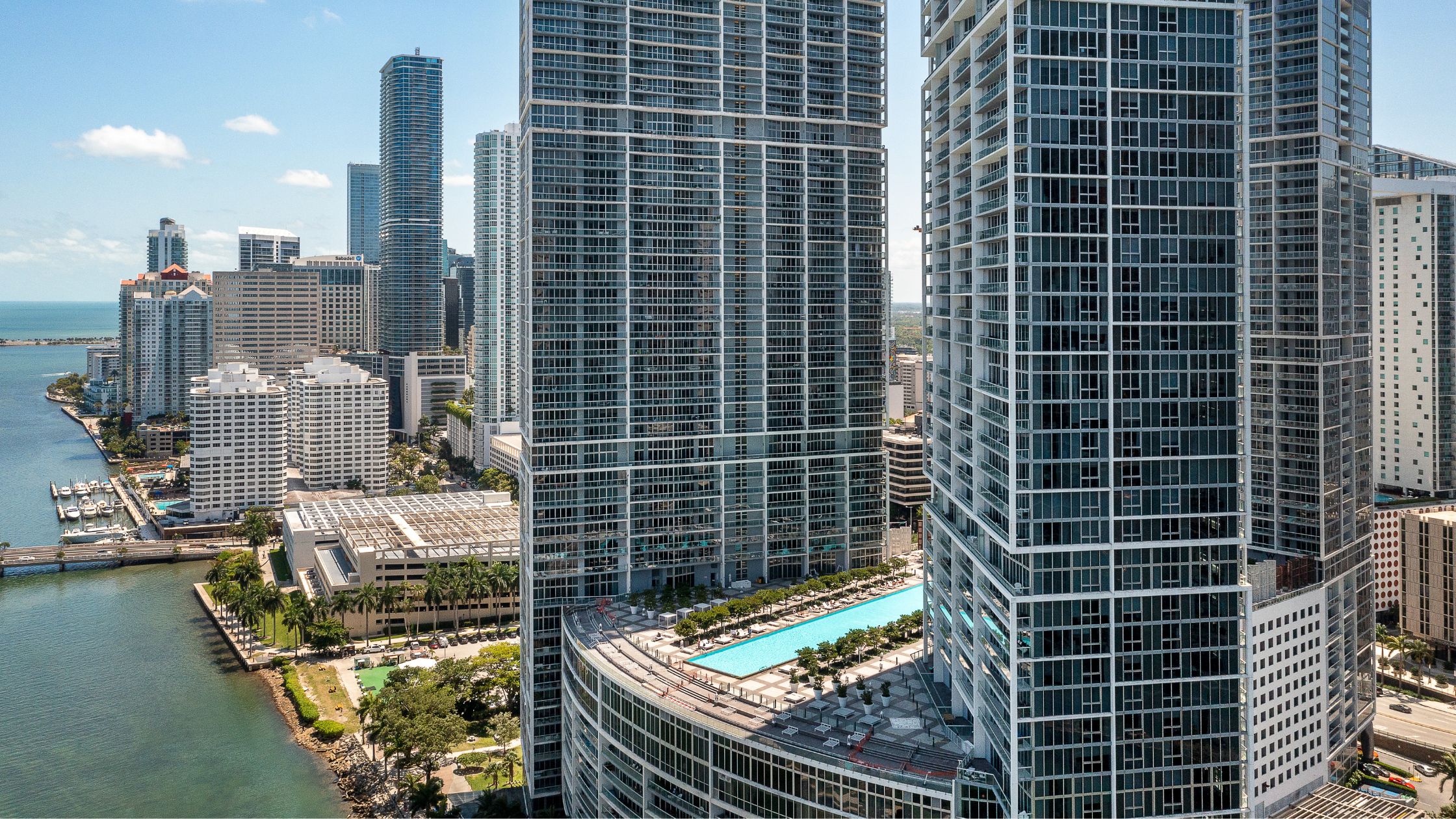If you’re looking to buy or refinance commercial property, where that property is located matters just as much as what it is.
After all, each state has its lender environment and rules — from loan approval criteria to interest rates and documentation requirements — that shape how CRE loans work.
These state-specific factors can influence every step of the CRE funding process.
Local economic conditions also affect commercial mortgage options by state. The number of active lenders in a state, how aggressive they are with terms, and even how commercial appraisals are handled all depend on geography.
That’s why we put together this CRE loan guide by state. It looks at what programs are commonly available and what regional quirks you as a borrower should be ready for.
By showing how financing options shift across state lines, we hope that this information helps you find the best states for commercial real estate loans and make better decisions overall.
But first: A national overview of CRE lending
As of the fourth quarter of 2024, the total commercial and multifamily mortgage debt outstanding in the US approached $4.8 trillion — that’s a 3.7% increase compared to the previous year, reflecting the ongoing demand and expansion within the CRE sector nationwide.
Major commercial real estate lenders
- Wells Fargo Bank leads with $646 billion in master and primary servicing. They remain one of the most active lenders for office, multifamily, retail, and industrial properties, offering acquisition, construction, and refinancing loans.
- PNC Real Estate/Midland Loan Services follows with $584 billion. As a specialized arm of PNC, Midland handles large-scale CRE servicing nationwide and has steadily built its footprint through both originations and acquisitions of servicing rights.
- KeyBank National Association handles $478 billion. It actively finances a range of asset types across both urban and suburban markets and is known for its regional reach.
Chances are you’ll cross paths with one of these major lenders when you’re arranging financing for your next commercial property. These institutions often drive the terms and availability of capital.
Other commercial property loans
Of course, traditional bank financing isn’t your only option. You may want to explore alternative loan types that offer more flexibility or faster turnaround depending on your project, timeline, and financial profile.
Hard money loans
A hard money loan could make sense if you’re working on a property that needs renovations or if you need to move fast on a deal. These short-term loans are backed by the property’s value (not your income), so they’re much easier to secure when time is tight.
You’ll find them more readily in states with strong investor activity and fast-moving markets like California, Arizona, and Florida.
Bridge loans
Are you in between selling one CRE property and buying another, or perhaps waiting for long-term financing to come through? You can use a CRE bridge loan to close that gap.
These CRE financing solutions are popular in high-volume markets where speed and liquidity often make or break a deal, like New York and Texas.
Stated income loans
If you’re a self-employed CRE investor or business owner, or if you simply have a non-traditional income setup, stated income CRE loans can give you funding access without the usual documentation banks require.
These loans are much more common in states that support non-qualified mortgage lending. Do note that some states impose tighter rules on this type of CRE financing, so availability can vary based on where you’re buying.
All of these commercial property funding options are available here at Private Capital Investors.
Get in touch with us if you are trying to find financing for navigating complex CRE deals or if your investment timelines are unconventional.
State-wise breakdown of commercial property loans
As we mentioned, loan availability isn’t the same everywhere because state-level economic policies and licensing rules have a profound effect on how easy it is to access CRE funding.
For example, some states may cap interest rates while others require specific lender disclosures that affect processing times and costs.
Knowing what’s available in your target state goes a long way in helping you plan ahead and avoid delays. Let’s look at seven states with active CRE markets and what to expect in each one.
1. California
Anyone who has ever invested in CRE knows that California is a high-stakes, high-reward market.
The state began showing signs of recovery in 2024 — especially in sectors like multifamily and industrial, which held steady despite broader economic headwinds.
Office properties continued to face pressure from remote work trends and elevated interest rates, but retail gained momentum.
Neighborhood centers anchored by grocery stores and upscale retail spaces outperformed expectations because of higher consumer demand for in-person shopping experiences.
Property values are high, which means that loan sizes are larger and lenders don’t cut corners.
Banks like JPMorgan Chase and Bank of America remain active in this space alongside relationship-driven local credit unions.
From a CRE financing standpoint, investors should prepare for tighter scrutiny. You’ll need a strong credit profile, detailed financials, and a clear business plan to get approved.
Expect environmental regulations and zoning laws to affect how your deal gets structured and how fast it moves.
If you’re planning to renovate or reposition a property, be sure to budget extra time for local permitting and compliance.
2. Texas
Texas continues to draw CRE investors because of its growing cities and flexible development environment — not to mention its relatively competitive costs.
Markets like Dallas, Houston, and Austin are seeing more activity across every major sector — office, retail, industrial, and multifamily.
The multifamily market remained especially strong in 2024 because of a strong renter population that now accounts for 38% of Texas households.
This demand supports financing options ranging from conventional bank loans to FHA and agency-backed loans through Fannie Mae and Freddie Mac (usually requiring 20% to 30% down).
The Dallas-Fort Worth continues to stand out for value-driven leases, with rents still well below coastal metros. New leasing volume had fully bounced back to pre-pandemic levels by Q3 2024.
Hospitality is also on the rebound — in fact, hotel occupancy rates stabilized at 63%, showing steady recovery even if they haven’t fully returned to pre-2020 levels.
Traditional banks, SBA-backed lenders, and private funding sources all operate here, so you’ll find options that match nearly any investment strategy if you’re financing a CRE property in Texas.
Bridge loans and hard money loans are also commonly used for transitional properties or time-sensitive deals.
The absence of a state income tax boosts your bottom line while the state’s streamlined permitting process helps speed up development timelines.
3. Florida
Florida’s CRE market and overall economy have been steadily growing in recent years.
Across Miami-Dade, Broward, and Palm Beach counties, commercial sales volume jumped 36% to $12.5 billion — that’s a sharp reversal after two years of decline.
All three counties notably saw double-digit increases in sales, with Broward leading at 54%.
You’re in good company if you’re targeting hospitality, retail, or multifamily assets in cities like Miami, Orlando, or Tampa, as these sectors now show consistent demand.
That said, seasonal fluctuations and storm risk often shape financing decisions in Florida more than in most states.
Stated income loans are popular among borrowers who are dealing with variable cash flow, especially in hospitality.
Local lenders and SBA-approved partners often offer flexible terms for small businesses and property investors, particularly in opportunity zones.
Florida’s regulatory environment supports deal-making with business-friendly programs, but insurance premiums and storm preparedness requirements can affect how lenders structure your loan.
If you’re working with properties that rely on tourist traffic or operate in coastal areas, you need to find lenders who understand those cycles. Niche financing is readily available if you know where to look.
4. New York
To invest in CRE in New York is to enter one of the most competitive commercial markets in the country.
In 2024, the state saw a strong rebound with investment sales climbing 26% year-over-year to surpass $28 billion.
Multifamily deals alone totaled $8.9 billion across 1,107 transactions, while development site sales surged to $5.5 billion from a wave of property conversions.
Activity picked up across multiple sectors — including office, which closed the year on a high note.
But financing in New York remains complex despite the momentum. Loan terms vary significantly between NYC and upstate markets.
Big banks like Wells Fargo and TD Bank still lead in Manhattan and Brooklyn, but many investors rely on hard money lenders to compete in a fast-paced environment.
Be ready for lenders to dig deep — expect to submit detailed appraisals, business plans, and long-term cash flow projections.
New York’s strict zoning laws and dense permitting requirements can also delay deals.
If you’re working in development or conversion, be sure to account for those extra layers as you plan your timeline and your financing structure.
5. Illinois
With a 2024 gross state product of $1.132 trillion that places it fifth in the US, Illinois no doubt has strong fundamentals.
Chicago itself holds a GDP of around $860 billion — a number that makes it the third-largest metropolitan economy in the US and a core hub for logistics and transportation.
Job growth is up, too. Non-farm employment recently topped pre-pandemic levels to reinforce Illinois’ role as a major economic engine.
As a CRE investor, you’ll find consistent opportunities in industrial and office properties here — especially in the Chicago metro area.
But do note that deal flow in this market can be quite volatile, which is why many borrowers rely on bridge loans or mezzanine financing, especially for assets in transition or repositioning phases.
State tax policies also add layers to financing decisions. High property and income taxes can impact returns and push lenders to adjust terms.
Community banks and regional lenders remain very much active here, but many CRE investors take it upon themselves to piece together deals from a mix of funding sources.
Illinois offers solid upside if you’re working on a redevelopment project or a value-add opportunity — that is, as long as you’re prepared to structure your capital stack creatively.
6. & 7. Arizona and Nevada
Arizona and Nevada are worth your attention if you’re looking to diversify your CRE portfolio in some of the nation’s fastest-growing markets. Phoenix and Las Vegas, in particular, offer plenty of opportunities for commercial investors.
Phoenix’s industrial sector is thriving, thanks to population growth and a strong base of retail and logistics demand.
The metro area is consistently outpacing national retail absorption averages, and Scottsdale, in particular, has become a hotspot for high-end retail development.
Meanwhile, Las Vegas is still a major tourism magnet, driving up not just retail and hospitality CRE but also the multifamily sector.
There are some overbuilding concerns in the broader Sun Belt, but demand for entertainment-focused properties keeps Las Vegas attractive.
What makes these neighboring states even more appealing is the fact that financing is easier to access. Property prices are still relatively affordable and regulation is lighter, which is why lenders are more open to creative deal structures.
For out-of-state investors, both states also offer a smoother entry point with faster deal cycles, less red tape, and plenty of room for appreciation.
You’ll see widespread use of hard money and bridge loans here, especially for hospitality and entertainment assets. These short-term financing tools allow you to move fast and either exit or refinance as market conditions shift.
Conclusion
Each state brings its own mix of regulations and lender expectations that can either support your deal or slow it down.
As a CRE investor, you need to learn how to tailor your financing approach to match your property’s location in order to put yourself in a stronger position to close deals quickly and efficiently.
Local insight matters now more than ever, whether you’re buying a warehouse in Dallas or repositioning retail space in Chicago.
So, if you need help securing flexible CRE financing in your state, don’t hesitate to talk to our team here at Private Capital Investors.
Consult with our CRE financing experts today to explore tailored loan solutions that fit both your goals and your market.





